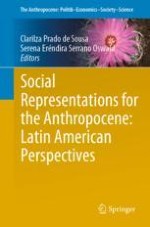The Anthropocene has become a field of studies in which the influence of human activity on the Earth System and nature is both the main threat and the potential solution. Social Representations Theory has been evolving since the 1960s.It links knowledge and practice in everyday life and is an effective way to deal with systemic crises based on common sense. This book assembles key contributions by Latin American scholars working with social representations in the social sciences that are of conceptual relevance to the study of the Anthropocene and that investigate the societal consequences of complex interrelations between common sense and topics of global relevance, such asthe contradictions of sustainable development, the construction of risks beyond risk-perception, health, negotiation and governance in the field of education, gender equality, the usefulness of longitudinal and systemic ethnography and case studies, and agency and the link between inequality, crises and risk society in the context of COVID-19, presenting theoretical and methodological innovations fromSpanish, Portuguese and Frenchresearchthat have rarely been available in English.
• This is the first book to address the relevance of Social Representations Theory for the Anthropocene as a societal era• It presents the multidisciplinary scope of Social Representations• This book covers emerging research contributions in Social Representations Theory from Latin America• This book presents innovative research and commentaries by established researchers in the field• This multidisciplinary book should be in the libraries of many disciplines in the social sciences and humanities
